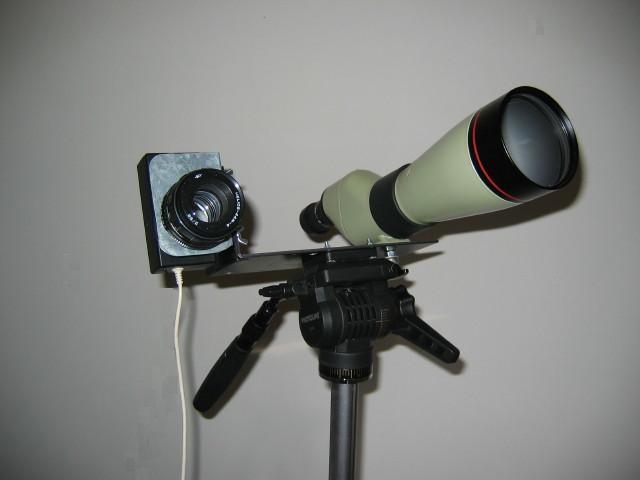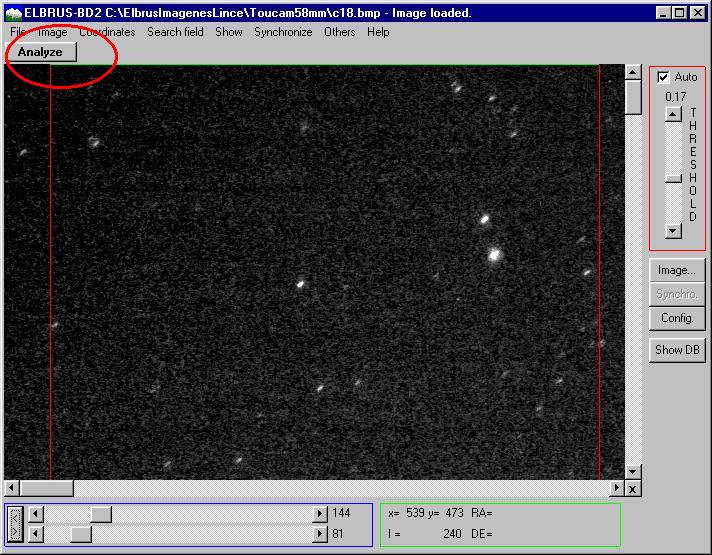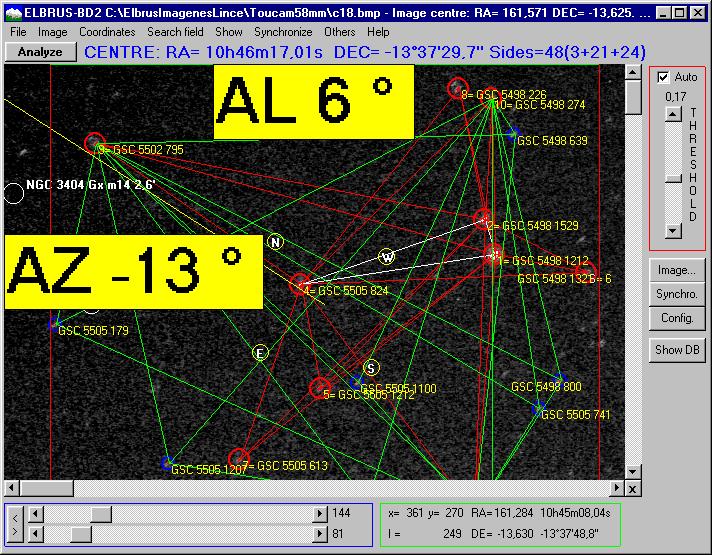 Elbrus - DB2: ayuda para llegar fácilmete al objeto
Elbrus - DB2: ayuda para llegar fácilmete al objeto Elbrus - DB2: pour arriver facilement a l'objet
Elbrus - DB2: pour arriver facilement a l'objet ELBRUS - BD 2 :
THE MAGIC FINDERSCOPE
FOR EASY TELESCOPE POINTING
 Elbrus - DB2: ayuda para llegar fácilmete al objeto
Elbrus - DB2: ayuda para llegar fácilmete al objeto
 Elbrus - DB2: pour arriver facilement a l'objet
Elbrus - DB2: pour arriver facilement a l'objet
INTRODUCTION
Pointing a telescope to an object is not always an easy job. Specially for faint objects and not experimented observers.WHAT DO YOU NEED
The necessary equipment is a telescope, a camera, a computer and obviously the program Elbrus with the DB2 database.
The assembly I used for testing. At right a spotting scope, at left the Toucam webcam with an objective lens of 58mm focal length at f2.
THE TELESCOPE
You can use any telescope. The camera must be well fixed to the scope. You must have some adjustment screws for collimation. That means for adjusting the position of the camera in order to have the optical axis of the camera parallel to the optical axis of the telescope.THE MOUNT
The mount can be equatorial or altaz type. Motorized or not. If the mount is not motorized, the stars would be alongated for exposures of several seconds. But this has no effect, as you can see in the example bellow.THE CAMERA
The camera must satisfy a very simple condition. It must give us sky images with several stars. About 10 or 20 stars. With a CCD webcam, this can be done with a few seconds exposition. Usually the webcams come with a very simple lens. You must change the objective lens and put a more powerful one. Nevertheless, a common lens for normal photography will do.THE COMPUTER
Any computer can do. It must be able to control the camera and run the programs.THE CAPTURING PROGRAM
Any program than can control the camera. For example AstroSnap.THE PLANETARIUM
It is not indispensable, but a software like Cartes du Ciel can help when shoosing the object by a simple click. Besides, the target coordinates should be transferred to Elbrus.THE PROGRAM ELBRUS
This is the program that will guide us to the target. For images with several degrees field, only the DB2 database is needed (about 10 MegaBytes). For more details about how to use Elbrus see the Elbrus page.AN EXAMPLE
Suppose you want to go to the NGC3521 galaxie. When everything is configured, we do as follows.



(Updated 10-JUNE-2009 Alfonso Pulido)
... this is ... http://www.astrosurf.com/pulgar ... enjoing astronomy ...